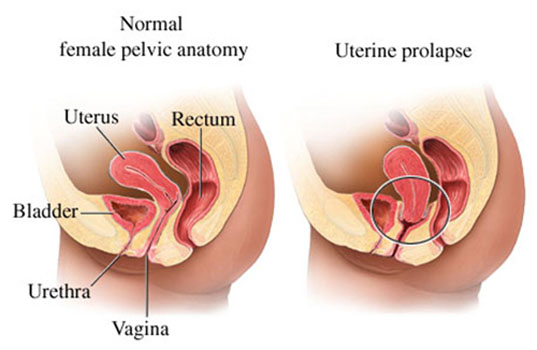Uterine Prolapse - symptoms and treatment

What is Uterine Prolapse
Uterine Prolapse is a circumstance in which the ligaments and muscles that support the UTERUS within the abdomen weaken, allowing the uterus to sag into the VAGINA. The weakness generally occurs as a consequence of multiple pregnancies that stress them or traumatic CHILDBIRTH that causes damage to them. OBESITY increases the risk for uterine prolapse. Less commonly, uterine prolapse may develop in a woman who has long-term chronic COUGH such as may occur with chronic BRONCHITIS or CHRONIC OBSTRUCTIVE PULMONARY DISEASE (COPD).
Symptoms of Uterine Prolapse
The symptoms of uterine prolapse may include
- sensation of heaviness or pressure in the lower pelvis
- PAIN during SEXUAL INTERCOURSE
- lower BACK PAIN
Depending on the severity of the prolapse, the uterus and cervix may protrude into the vagina or through the entrance of the vagina (vaginal introitus). The diagnostic path includes PELVIC EXAMINATION, which is typically sufficient for the doctor to diagnose uterine prolapse.
Uterine Prolapse Treatment
Treatment for mild to moderate uterine prolapse is most often a vaginal pessary, a fitted device the woman inserts into her vagina to hold the uterus in position. Treatment for moderate to severe uterine prolapse is surgery either to repair the muscles and ligaments (sacral colpopexy) or to remove the uterus (HYSTERECTOMY). Surgery provides permanent correction, though in some women the damage to the pelvic structures may later experience vaginal prolapse (sagging of the vaginal walls).
See also AGING, REPRODUCTIVE AND SEXUAL CHANGES THAT OCCUR WITH; CYSTOCELE; LIGAMENT; MUSCLE; PREGNANCY; RECTOCELE; SURGERY BENEFIT AND RISK ASSESSMENT.